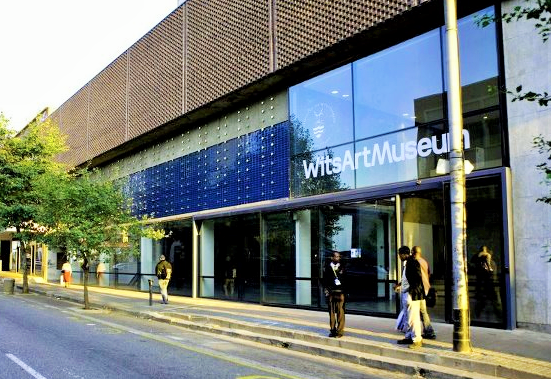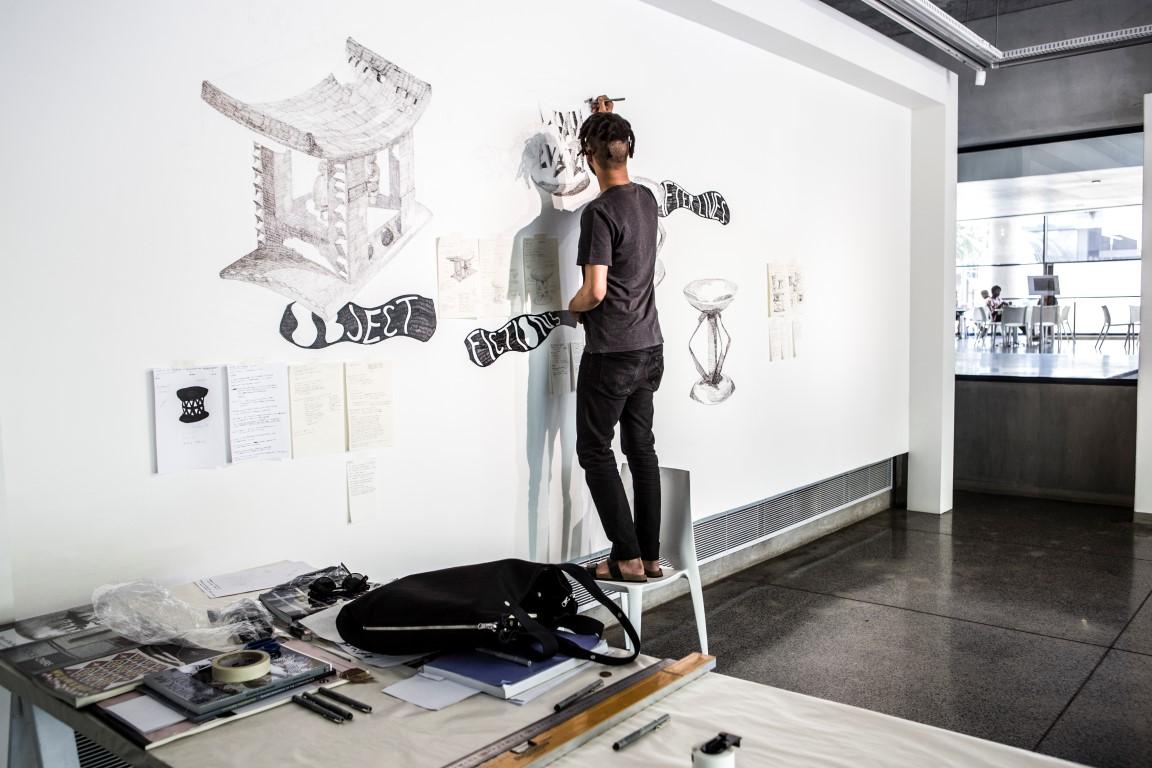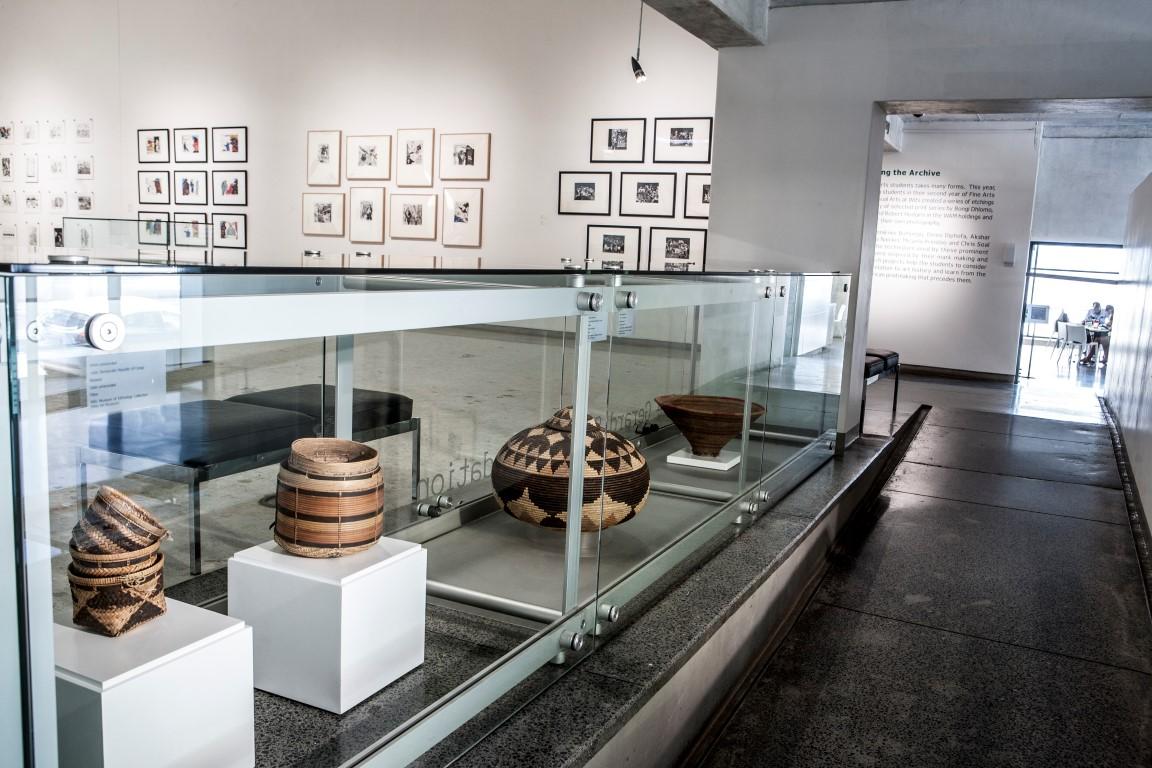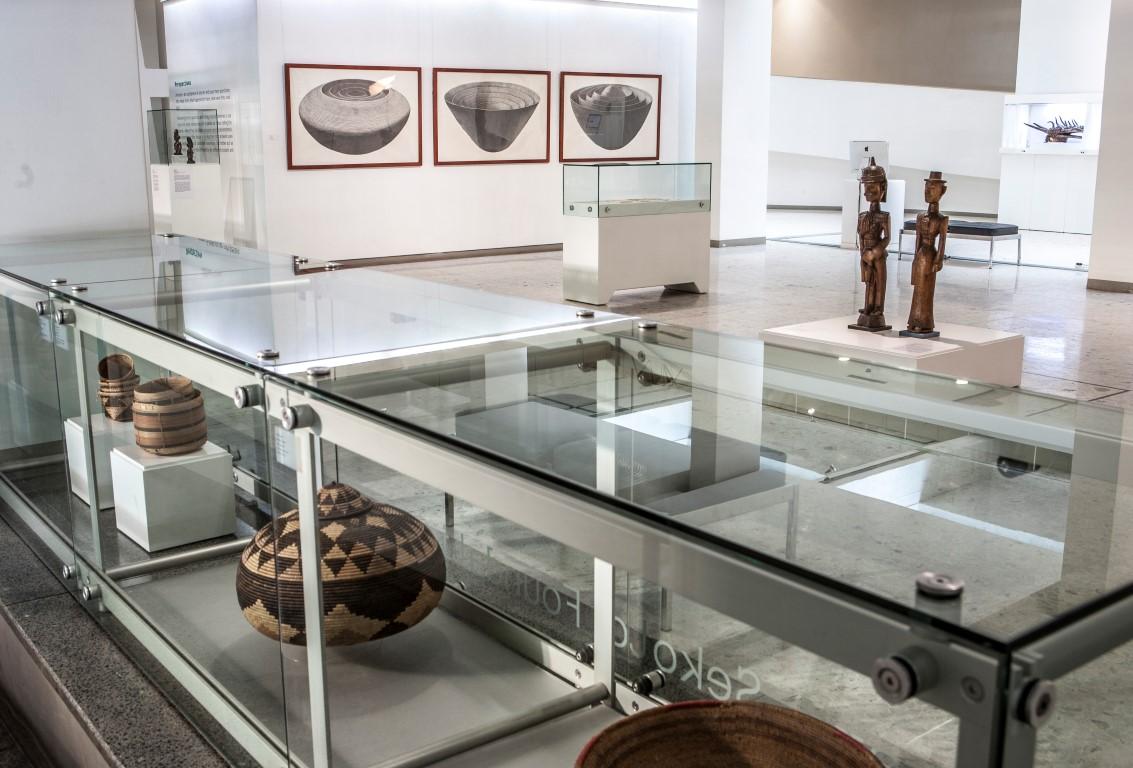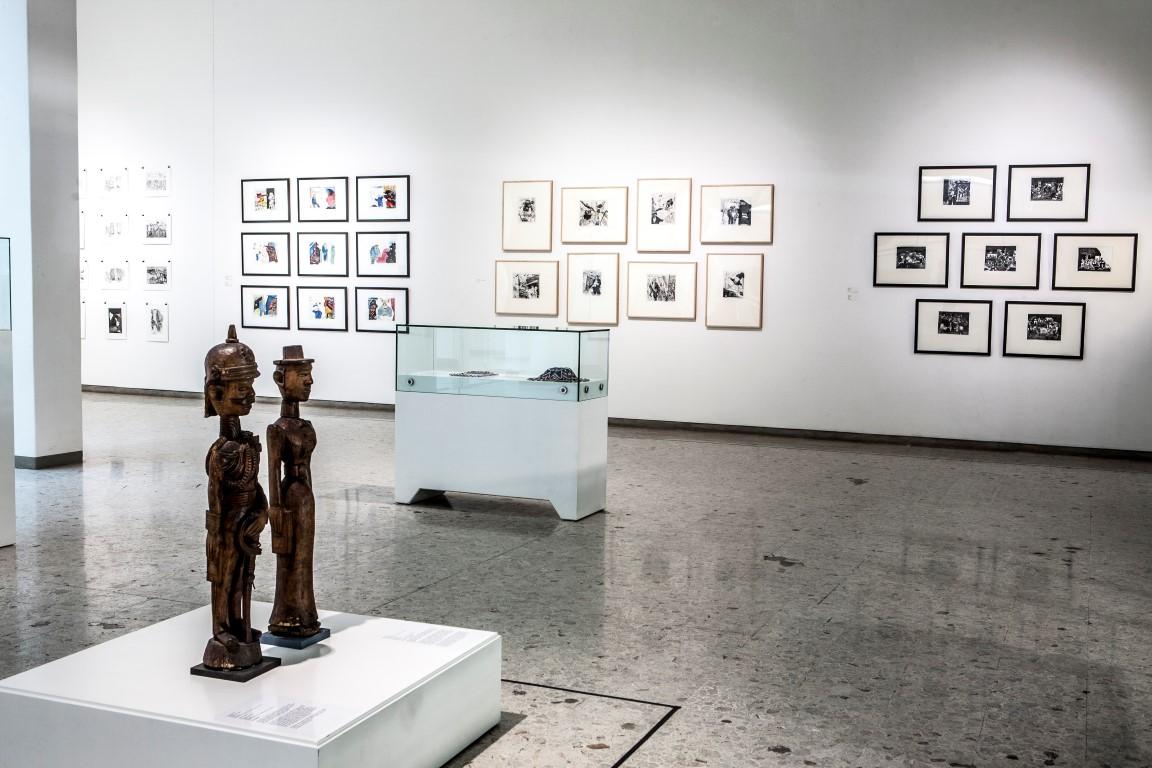
Activate/Captivate, Collections re-engagement at Wits Art Museum, edited by Laura De Becker and Anitra Nettleton, published 2015 by Wits Art Museum, 192 pages, illustrated. ISBN 978 0 620 67792 9
In 2015 Wits Art Museum hosted a splendid exhibition of a range of objects housed in the museum, offering a reflection and analysis of the many diverse collections. The exhibition in the nature of temporary displays came and went far too quickly. However, the more permanent legacy of the exhibition is a brilliant book, edited by two distinguished art historians with thoughtful chapters contributed by 14 scholars on different aspects of the making of the Wits Art Museum, its collections and its objects. The book grew out of the Collections Re-engagement Project with the book and exhibition made possible by the generous support of the Andrew W Mellon Foundation.
Book Cover
The Museum is situated on the corner of Jorrison and Bertha Streets (continuation of Jan Smuts Avenue) Braamfontein and its physical presence and accessibility through the plate glass frontage immediately gives Wits a visible point of interaction with the City of Johannesburg. It is remarkable that since the opening of WAM in 2012 it has become one of the must visit places for visitors and residents. The collection comprises over 10 000 objects, though at any one time perhaps a few hundred are on display. The clever conversion of the old Lawson's garage and offices by the architects, Cohen and Garson, into three separate galleries, a basement, the core ground floor gallery and the mezzanine space superbly but unobtrusively lit means that at any one time there may be up to three exhibitions happening. The public space also includes a cafe with a street presence. WAM is all the more extraordinary as private donors subscribed the funds and the project went ahead on a very tight budget.
A visible point of interaction with the city (The Heritage Portal)
I have been impressed by the speed with which WAM has established its intellectual leadership in the art world with a national importance, beyond Johannesburg and Gauteng, with its premier collections of African art and art objects. But this book is a record and reminder that as a University museum, the collections were built up over nine decades and that many collectors and researchers have donated their collections to their alma mater. The Gertrude Posel gallery, which many alumni will remember, was the antecedent located in Senate House from 1972 to 2002. It then took a full decade for funds to be raised and for a spectacular phoenix-like rebirth in 2012.
This volume marks the coming of age of WAM and is a timely reflection of how collections are formed and together move beyond 'gallery' to 'museum' status.
The volume is arranged around three parts. Part 1 focuses on the building of a museum in Johannesburg. Part 2 details how and why WAM collections become a source of inspiration and information. Part 3 covers the specifics of the Object Biographies project. Chapters can be read as stand alone sections.
The first chapter by De Becker and Nettleton explores the interconnected relationship of museum and university and elaborates on the tripartite mission of WAM in serving the city, the community and the academy through research, scholarship, education and exhibitions open to the public.
Its the hidden part of WAM, the storeroom spaces, that beguile and attract visitors lucky enough to be on a behind the scenes tour. Current exhibitions draw on the hidden treasures of the storerooms, with their metal industrial shelving, locked cupboards and sliding drawers. Julia Charlton offers a fascinating insight into those storerooms and gives a systematic survey of the origins of the many collections owned by WAM. Who were the collectors, donors and benefactors of Wits collections and how and why were these collections acquired. The spread of collecting had been from art to ethnology and beyond.
Artist Nolan Oswald Dennis working on his mural in ‘Activate / Captivate’ at WAM
The architectural evolution of WAM is discussed in a chapter by a Wits professor of architecture, Professor Paul Kotze and his students, Blumberg and Maharaj. The seeming simplicity of an adaptive reuse of earlier difficult buildings is unpacked to show the complexities and creative challenge met by the architects, and gives an analysis of space, symbolism and form within the urban landscape.
Alison Kerney and Leigh Leyde show how theory is applied to the practice of school education, reporting on how WAM has become a teaching space for groups of secondary school learners. They specifically discuss the children's responses to the Ngezinyawo-Migrant Journeys and the Doing Hair exhibitions and explain how trained docents making use of the educational exhibition guides are an excellent teaching tool. Bringing groups from disadvantaged schools (sponsored by donor funding) broadens cultural horizons and gives enriching opportunities in meaningful ways. David Andrew and Niall Bingham explain how the WAM print collection is used to teach print making to first year university students, with the project revealing a complex dialogue between the intentional and unintentional.
The artist Walter Oltmann discusses how handcraft collections at WAM have served as a valuable resource in his own research and how craft / handiwork has inspired his own wire sculptures. Placing value on craftwork and handcrafted objects breaks down the boundaries between arts and crafts, in for example beadwork, textiles and clay. Perspectives about what is "art" changes completely. Anitra Nettleton explores the concept of "authenticity" in African art, how "museum standard" is defined and the challenges she faced in developing the discipline of and courses in African art. She explores the difference between objects which came from the contexts in which such objects were made for use and flea market wares which were made for the purpose of being sold.
Inside WAM
In Part 3 Justine Wintjes stretches teaching boundaries with her account of the Object Biographies project aimed at recovering the complex histories of particular objects in WAM's collection, working across time and place and so growing knowledge and revealing a web of relationships within and around a museum collection. This theme is taken further by Laura De Becker who faces the challenge of objects held in WAM collections storerooms which are perhaps undated and the creator or artist is anonymous or unknown; how then does classification and categorization take place.
In the final chapter, Joni Brenner and Stacey Vorster delve into a 2014 exhibition Lifelines: Object Biographies from the Standard Bank African Art Collection and share what starts as a student art project as it takes on a life of its own and leads the researcher into deeper meanings and life beyond a selected number of objects.
Overall this study knits together the relationship between theory and practice, the "viewing" and the "doing" become one. The book is testimony to why this particular museum at Wits is so special. Perhaps my only criticism is that there is no mention of the other dozen or so museums at the University with the book concentrating just on this fabulous collection. Wits needs a book on all its collections, rather like the UCT volume (click here to read my review).
Another shot inside WAM
The book is magnificently illustrated with over 80 colour photographs and figures and the layout and style of the book makes this volume exceptionally desirable. At a price of R300 it is eminently affordable and an essential book if you are keen on building a book collection on African Art. It's a five star volume! Copies of the book are still available at WAM and I have little doubt that once the out of print moment arrives the price on the secondary market will rise steeply.
Kathy Munro is an Honorary Associate Professor in the School of Architecture and Planning at the University of the Witwatersrand. She enjoyed a long career as an academic and in management at Wits University. She trained as an economic historian. She is an enthusiastic book person and has built her own somewhat eclectic book collection over 40 years. Her interests cover Africana, Johannesburg history, history, art history, travel, business and banking histories.

